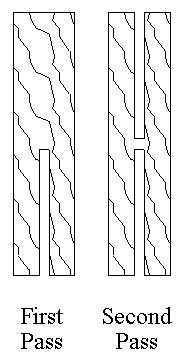Finally got around to this..Got tired of dodging little pieces panel molding flying by my face..Anyway, one of the reasons I put this off for so long is I didn't want to have an Aux fence permanently attached to the Kapex. Then, lightbulb...I took a good look at the scrap I had laying around, and basically traced the fence shape out and traced the bolt holes on some 1/2 inch plywood. Two quick cuts with the jigsaw, drilled it, sanded it and done. Only thing I had to run to the store for was the knobs, which for my needs was the key. Easy on, easy off.
Being that it was only 1/2 inch plywood it takes up less of my saw bed. I am going to put some epoxy in those panhead bolts to permanently fix them in the plywood aux fence pieces. But the knobs make it pretty nifty to take on and off in seconds. Probably paint it or throw 40 coats of Poly on it to see how shiny I can get it.
Being that it was only 1/2 inch plywood it takes up less of my saw bed. I am going to put some epoxy in those panhead bolts to permanently fix them in the plywood aux fence pieces. But the knobs make it pretty nifty to take on and off in seconds. Probably paint it or throw 40 coats of Poly on it to see how shiny I can get it.

